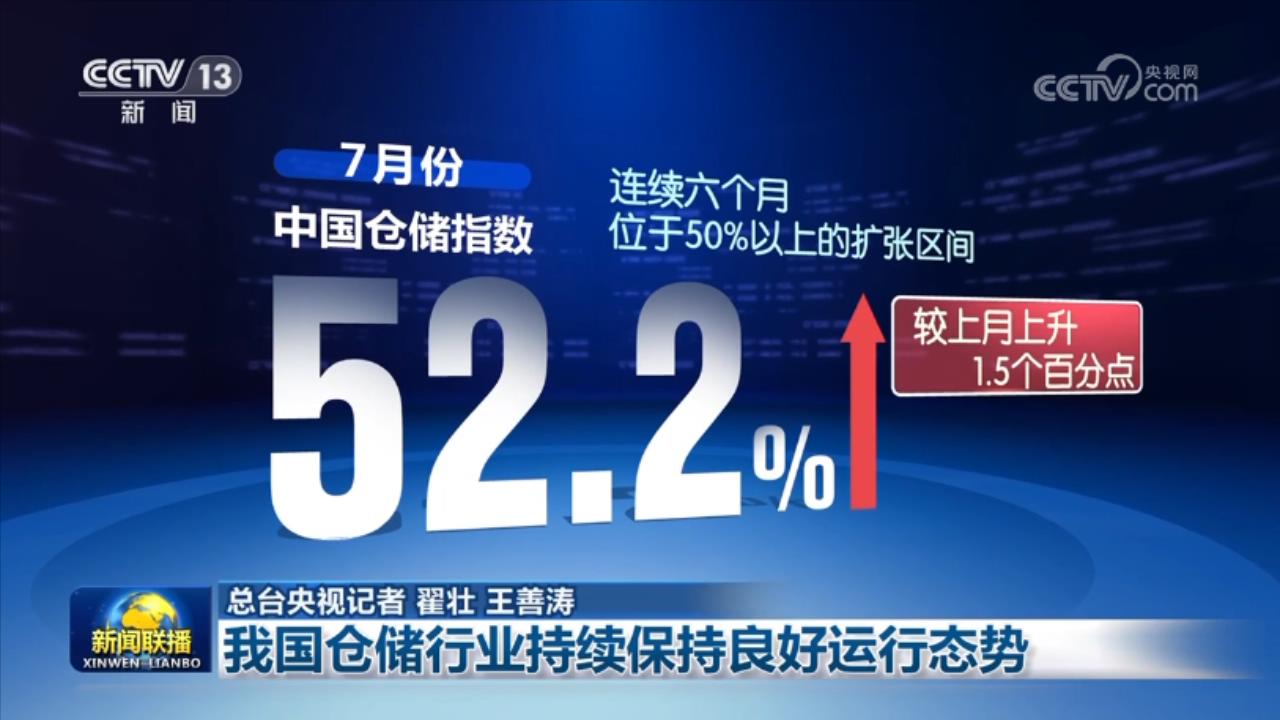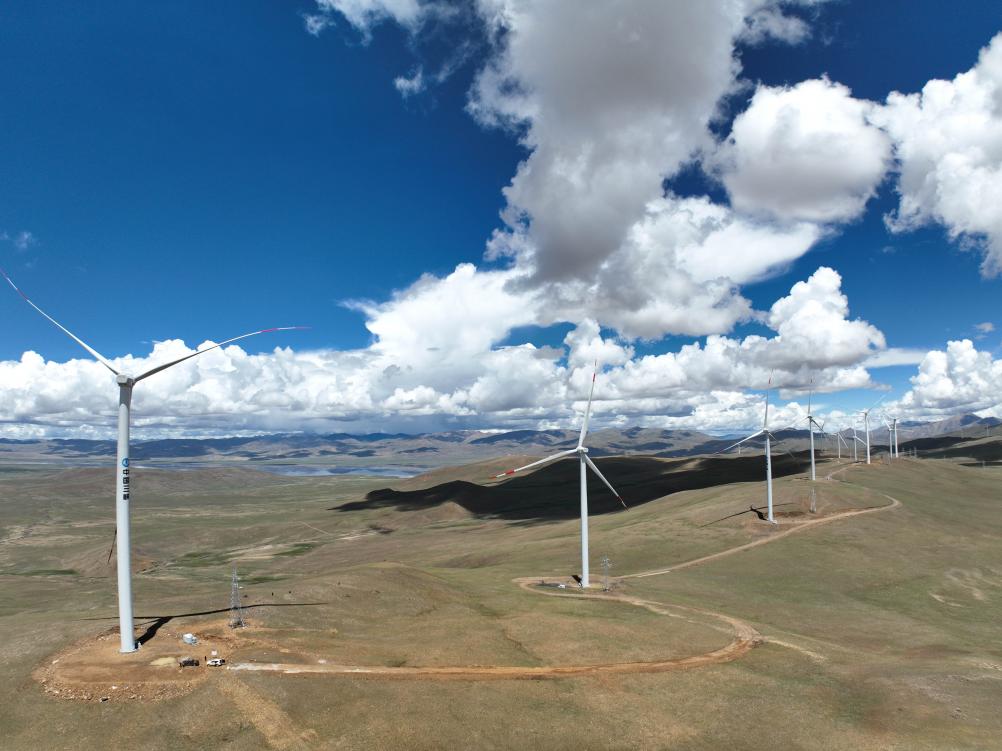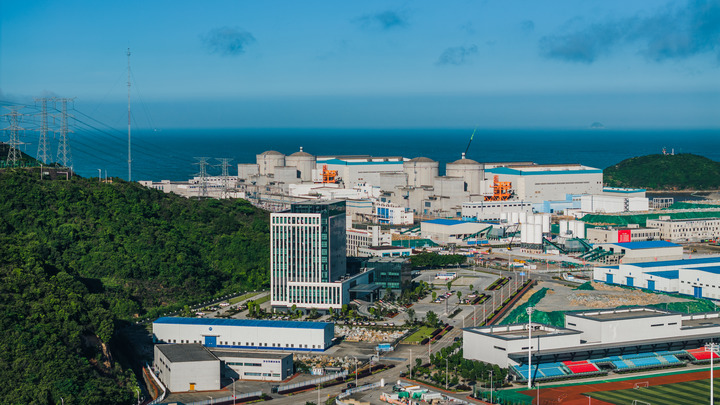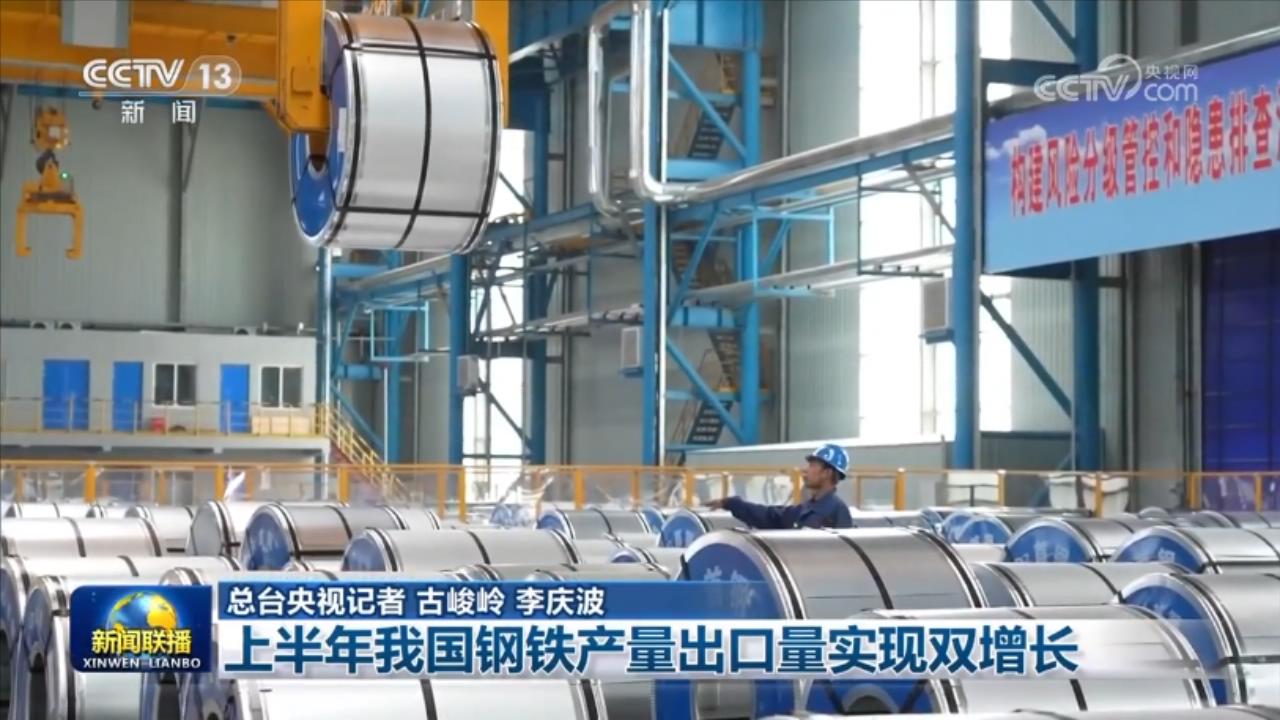Counting Economy | China’s lithium battery output has increased by over 43%. High-altitude wind power projects are connected to the grid for power generation.
Cctv newsOn August 3rd, the Ministry of Industry and Information Technology released data. In the first half of this year, China’s lithium battery and photovoltaic industries maintained steady growth.
The lithium battery industry continued to grow. In the first half of the year, the national lithium battery output exceeded 400GWh, a year-on-year increase of over 43%. The industry-wide revenue of lithium batteries reached 600 billion yuan; The export of lithium battery products increased by 69% year-on-year.
The output of polysilicon, silicon wafers, batteries and components in the photovoltaic industry chain reached a new high, with a year-on-year increase of over 65%; The total export of photovoltaic products reached US$ 28.92 billion, up 11.6% year-on-year. Look at today’s News Network report.
△ On August 3, "News Network" reported that the output of lithium batteries in China increased by more than 43% in the first half of the year.
The revenue of "Top 50 Logistics Enterprises in China" increased by 13.4% year-on-year.
On August 3rd, China Federation of Logistics and Purchasing released the List of Top 50 Logistics Enterprises in China in 2023. In 2022, the business income of "Top 50 Logistics Enterprises in China" totaled 2,345.6 billion yuan, up 13.4% year-on-year, and the business income of "Top 50 Logistics Enterprises in China" accounted for 18% of the total income of the logistics industry, the highest level in the past years.
Among the "Top 50 Logistics Enterprises in China", 19 are private enterprises, accounting for a continuous increase. In 2022, the business income of "Top 50 Private Logistics Enterprises" totaled 10,257 yuan, up 18.7% year-on-year.
China Federation of Logistics and Purchasing announced on the 2nd that in July this year, China’s warehousing index was 52.2%, which was in the expansion range of more than 50% for six consecutive months. The data shows that the production and operation activities of warehousing enterprises are active, the business volume has increased significantly, and enterprises are optimistic about the market prospects.

The highest altitude wind power project in China has been successfully connected to the grid for power generation.
On August 3, the highest wind power project in China was successfully connected to the grid in Zhegu Town, Cuomei County, Tibet, which is more than 5,000 meters above sea level. After the project is fully put into production, the annual online electricity consumption will exceed 200 million kWh, which can meet the annual electricity consumption of nearly 140,000 households around; It can save over 60,000 tons of standard coal, reduce carbon dioxide emissions by nearly 173,000 tons and reduce sulfur dioxide emissions by over 20 tons every year.
In wind power projects, the altitude from 3,500 meters to 5,500 meters is generally referred to as ultra-high altitude area. The wind turbine with a single unit capacity of 3.6 MW connected to the grid is the wind turbine with the largest capacity that has been put into production in ultra-high altitude areas in China.
The project broke the misunderstanding that "plateau wind energy is weak and has no development value", and at the same time, it designed a fan with special functions such as anti-ultraviolet, anti-lightning, anti-low temperature and anti-icing, which can run stably for a long time in harsh natural environment.
Xizang Autonomous Region is one of the regions with relatively high wind speed in China. According to preliminary estimation, the technical exploitable capacity of its wind energy resources is about 180 million kilowatts, mainly distributed in high-altitude areas above 4,800 meters.

△ The picture shows the Cuomei Zhegu Wind Farm in Tibet. (Photo courtesy of Three Gorges Group)
The scale of nuclear power units under construction in China continues to rank first in the world.
Recently, Units 5 and 6 of Fujian Ningde Nuclear Power Project, Units 1 and 2 of Shandong Shidaowan Nuclear Power Plant Extension Phase I Project, Units 1 and 2 of Liaoning Xudabao Nuclear Power Project and six nuclear power units were approved by the state. At present, there are 22 nuclear power units under construction in China, and the scale under construction continues to rank first in the world.
From January to June this year, the cumulative power generation of nuclear power units in operation nationwide was 211.884 billion kWh, accounting for 5.08% of the national cumulative power generation, up by 7.01% over the same period in 2022; The cumulative online electricity consumption was 198.923 billion kWh, up by 7.16% over the same period in 2022.
Ningde nuclear power project is the first nuclear power plant started and put into operation in Fujian Province. The approved four nuclear power units, including Units 5 and 6 in the second phase of Ningde Nuclear Power Project, will adopt the third-generation nuclear power technology "Hualong No.1" with independent intellectual property rights in China. It is estimated that by the end of the 14th Five-Year Plan, the total number of "Hualong No.1" nuclear power units put into operation in China will exceed 10.
"Hualong No.1" adopts the world’s highest safety requirements and the latest technical standards. The annual power generation of a single "Hualong No.1" nuclear power unit is nearly 10 billion kWh, which can meet the annual electricity demand of 1 million people. It can reduce the consumption of standard coal by more than 3 million tons and reduce carbon dioxide emissions by more than 8 million tons every year.

△ The picture shows Fujian Ningde Nuclear Power Plant. (Photo courtesy of CGNPC)
In the first half of the year, China’s steel output and export volume achieved double growth
On August 2nd, China Iron and Steel Industry Association released data. In the first half of this year, China’s iron and steel industry operated smoothly, with double growth in output and export volume.
Specifically, China’s steel output in the first half of the year was 536 million tons, a year-on-year increase of 1.3%; Pig iron output was 452 million tons, up 2.7% year-on-year; Steel output was 677 million tons, up 4.4% year-on-year. In addition, in the first half of the year, China exported 43.58 million tons of steel, a year-on-year increase of 31.3%.

Over 600 well-known private enterprises visited Shenyang.
On August 3rd, the All-China Federation of Industry and Commerce organized more than 600 well-known private enterprises to inspect advanced equipment manufacturing, modern agriculture, new energy, metallurgical new materials and other industries in Shenyang, and signed projects with the local government.
In Liaoning, there are 8,800 small and medium-sized industrial enterprises above designated size, accounting for 97.8% of all industrial enterprises above designated size. The event will have 140 billion yuan of contracted projects in Liaoning, covering new materials, environmental protection and other industries.